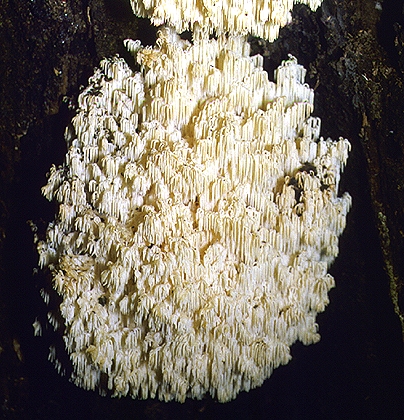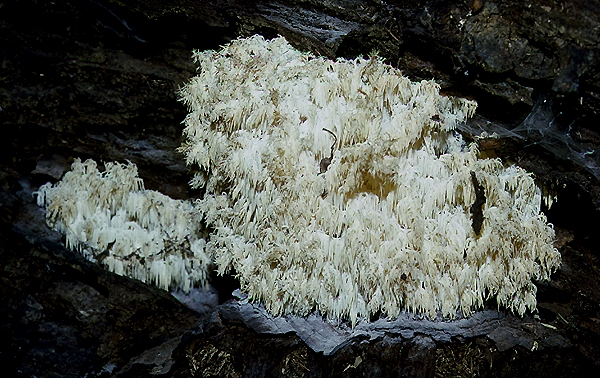
Hericium coralloides (Scop. : Fr.) Pers.

Common name: None.
Description: Hericium coralloides forms large, coralloid, white masses on wood, about 20 cm in diameter. The structure is intricately branched with clusters of hanging spines. The fungus often becomes brown-stained or cream-coloured as it ages.
The spores measure 67 × 46 µm and are broadly ovoid to subglobose, usually finely rough and colourless but white in mass. The spores become blue-tinted when tested with iodine solution.
Substratum: Always on dead wood in forests, either on the trunks of standing trees or on decaying logs. Usually solitary, but occasionally several fruiting bodies may emerge together.
Distribution: Known from Queensland, New South Wales, Victoria and Tasmania.
Notes: Hericium clathroides is an earlier name for this fungus. Another member of this genus in Australia is H. ramosum. It has a similar growth habit, but the spines become very finely branched so that the ultimate tips almost resemble moss or a miniature pine forest.

